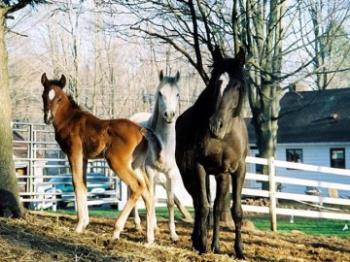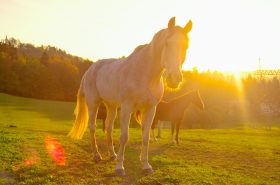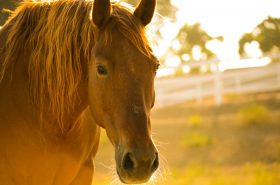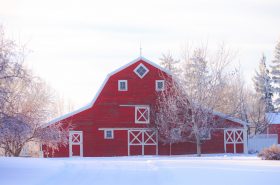One of your most critical investments will be creating the environment where your foal takes those first steps, jumps, and hops in the big new world. 
Just as you would prepare a nursery ahead of time for a new baby, (of the human variety), pre-planning a nursery paddock for your foal is equally critical. Warm sun and new, lush grass will complement your feeding program and help keep mare and foal on a healthy track.
Your nursery paddock needs to be strong, roomy, and as safe as it can be. Your mare will be protective of the new foal. Having a paddock separate from other horses gives your mare and foal time to adjust to the world and each other. Seasoned, non-threatening horses looking on from other pastures will help with security imprinting. Maintaining aisles of 12-24′ between your nursery paddock and the “onlooker” paddocks ensures peace of mind for you and for the mare and foal.
New foals are like long-legged rubber bands that fall and roll to the ground in a “heap,” making it very easy for them to slip through or get caught up in some fencing materials. Fencing considerations run the full range from woven wire, flex-fence and electric to any combination of these. V-mesh or other woven wire systems are excellent for keeping predators away from your foal, but should have spacing tight enough to prevent small hoofs from getting caught.
Any rail fence system will need to be installed with less space between rails so that the foal cannot slip through or under the fence. Foals can roll under the bottom rail of a fence to the other side with very little effort, if that fence is too far off the ground. Standard rail spacing is generally eight to 11 inches between rails. For foals, as well as ponies and minis, maintain a rail spacing of six to eight inches.
An existing fence can be modified to reduce the spacing between railings by installing coated wire, one-inch flexible rail or electric tape between established rails. Woven wire can also be added to nearly any type of existing fence. Flexible rail fence systems can be used in varying combinations to suit just about any situation.
Nursery paddocks should be built to accommodate your foal as he or she grows. Consider installing a flexible rail fence using five rails. Keep less space between rails at the bottom of the fence, increasing the spacing as you move toward the top. Having smaller spaces at the bottom prevents slip-throughs, while incorporating larger spacing as you move up creates a total height that will hold a larger horse securely. Electric tape or coated wire can be added for the yearling or two-year-old that becomes more aggressive and playful.
When installing any fence, be sure to crimp all cut ends of wire, and double check spliced areas to make sure there are no sharp edges exposed. Choose the safest fencing you can for your mare and foal. Provide a good water source and protection from intense heat and sun. Imprint and enjoy the experience!



